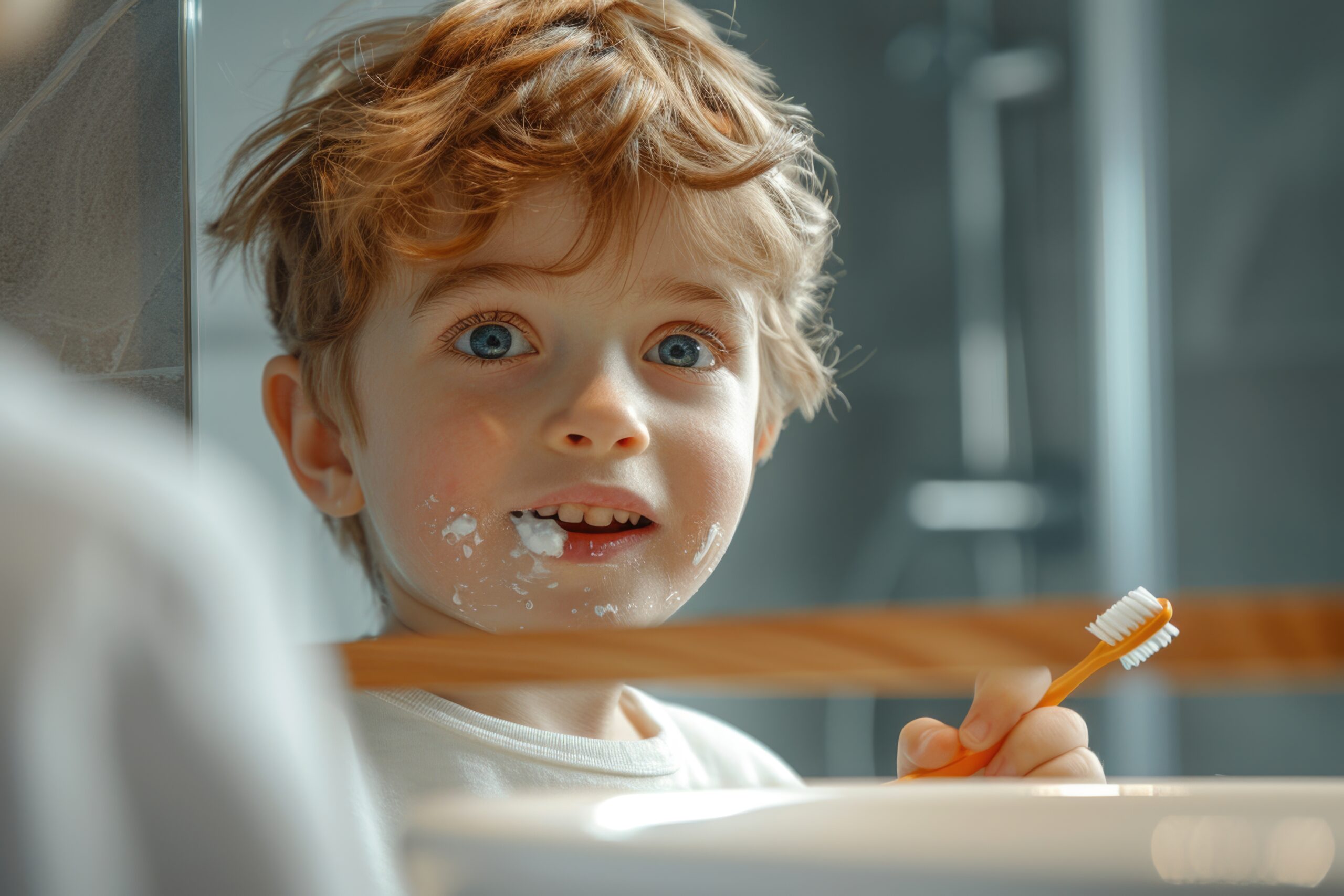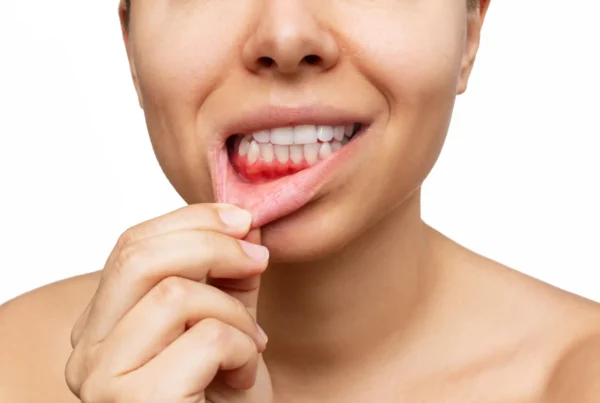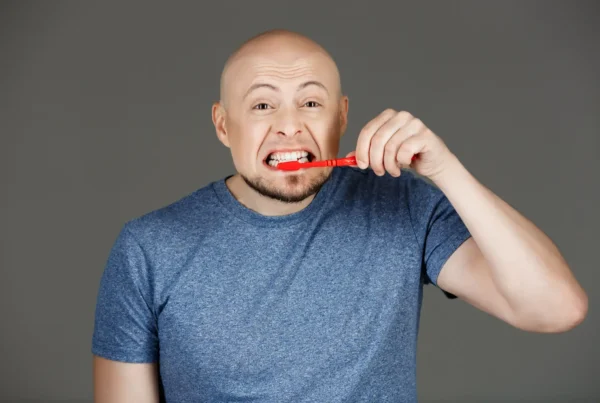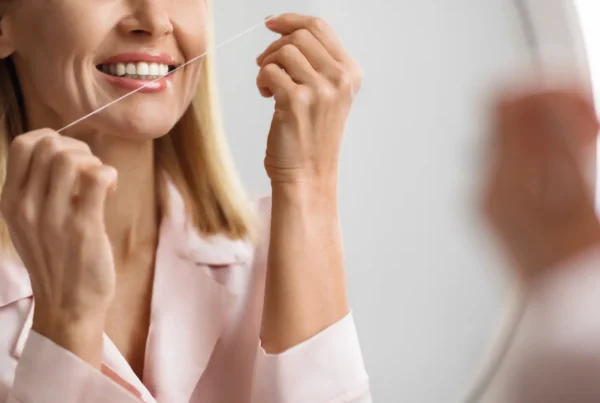Why oral hygiene for kids is essential
Establishing proper oral hygiene habits from an early age plays a crucial role in ensuring long-term dental and gum health. Even though baby teeth are temporary, their condition significantly affects a child’s development. Teaching kids to take care of their teeth early helps prevent cavities and gum disease and sets the foundation for lifelong dental health.
Preventing tooth decay
Cavities are one of the most common dental issues in children. Baby teeth help with chewing, speech development, and maintaining space for permanent teeth. Untreated decay can lead to pain, infections, and premature tooth loss, which can disrupt the alignment and health of future adult teeth.
Protecting against gum disease
Poor oral hygiene can lead to gingivitis and other gum issues, even in young children. Healthy gums are critical for supporting strong teeth. Daily brushing and cleaning between the teeth help maintain gum health and prevent inflammation or sensitivity.
Building healthy habits for life
When kids learn good oral hygiene early—brushing, flossing, visiting the dentist—they are more likely to carry these habits into adulthood, reducing the risk of dental problems later in life.
Supporting overall health
Oral health is linked to general health. Infections in the mouth can spread to other parts of the body, potentially causing issues like endocarditis or respiratory problems. Maintaining oral hygiene helps prevent such complications.
Boosting self-confidence
Healthy teeth and fresh breath are key to a child’s confidence and comfort in social interactions. Good dental care contributes positively to emotional and psychological development.
Positive dental experiences
Introducing children to regular dental visits early helps reduce fear and anxiety about the dentist and builds a strong foundation for lifelong care.
What should a good children’s toothpaste include?
Choosing a safe, effective toothpaste for your child is essential. Here are the key features to look for:
Safe ingredients
A child’s toothpaste should be free from harsh chemicals like parabens, SLS, artificial dyes, or preservatives. These can irritate delicate tissues in the mouth.
Age-appropriate fluoride content
Fluoride helps prevent cavities, but the concentration should match the child’s age. For toddlers, opt for formulas with low fluoride levels (up to 500 ppm). Older children can use toothpastes with up to 1450 ppm fluoride, under supervision.
Low abrasiveness (low RDA)
Children’s enamel is thin and sensitive. Choose toothpastes with a low RDA (Relative Dentin Abrasivity) to avoid mechanical damage during brushing. Avoid whitening pastes meant for adults, which are often too abrasive.
Pleasant, mild flavor
Toothpaste flavor affects brushing habits. Choose a gentle fruit flavor to make brushing enjoyable. Avoid overly sweet or strong minty flavors that may discourage regular brushing.
No harsh foaming agents
Avoid toothpastes with SLS, which can cause irritation. Gentle surfactants improve brushing comfort and reduce the chance of adverse reactions.
Child-friendly packaging
Kids are drawn to visuals. A colorful tube featuring characters from their favorite cartoons can make brushing fun and exciting.
Easy to use
The toothpaste should be easy to apply, and the tube should be simple enough for kids learning to brush on their own.
Enriched with functional ingredients
Some toothpastes for kids also contain xylitol to prevent decay, and plant extracts like chamomile or aloe vera to soothe gums—ideal for toddlers or those experiencing sensitivity.
Recommended toothpastes for children
Here are a few popular, trusted options for kids’ dental care:
- Elmex Junior. For kids aged 6–12, this toothpaste contains the right fluoride dose to protect and strengthen enamel. Its mild flavor makes it easier for kids to accept than strong minty pastes.
- Ziajka by Ziaja. A fluoride-free toothpaste ideal for children under age 2. Gentle on enamel and gums, it includes natural ingredients like xylitol for cavity protection and has a delicate mint taste. Suitable for use with electric and sonic toothbrushes.
- Aquafresh Little Teeth. Designed for ages 3–5, it offers gentle fruit flavors and proper fluoride levels. Kids love the taste, and it effectively removes plaque and food residues when brushing is done thoroughly.
- Nenedent. This enzyme-based, fluoride-free toothpaste is perfect for children under 3 who are still learning to spit after brushing. The enzymes offer natural protection against decay.
- Splat Kids. For ages 2–6, this toothpaste contains natural ingredients like calcium and aloe. Available in kid-friendly flavors like raspberry and banana, it makes brushing enjoyable.
- Jack N’ Jill. An eco-friendly toothpaste brand from Australia. Free from fluoride, SLS, parabens, and synthetic colors, it’s available in fun flavors like strawberry, blueberry, and banana—perfect for parents seeking all-natural options.
Final thoughts – which toothpaste is best for your child?
When choosing a children’s toothpaste, look for:
- Age-appropriate fluoride or fluoride-free options
- Gentle, safe ingredients
- Fun flavor and packaging
- A formula that supports both protection and comfort
Early dental care is about more than clean teeth—it’s about creating a lifetime of healthy habits. Combine regular brushing, a healthy diet, gentle toothbrushes (like sonic models), and dental checkups to ensure your child has a bright and confident smile for years to come.






